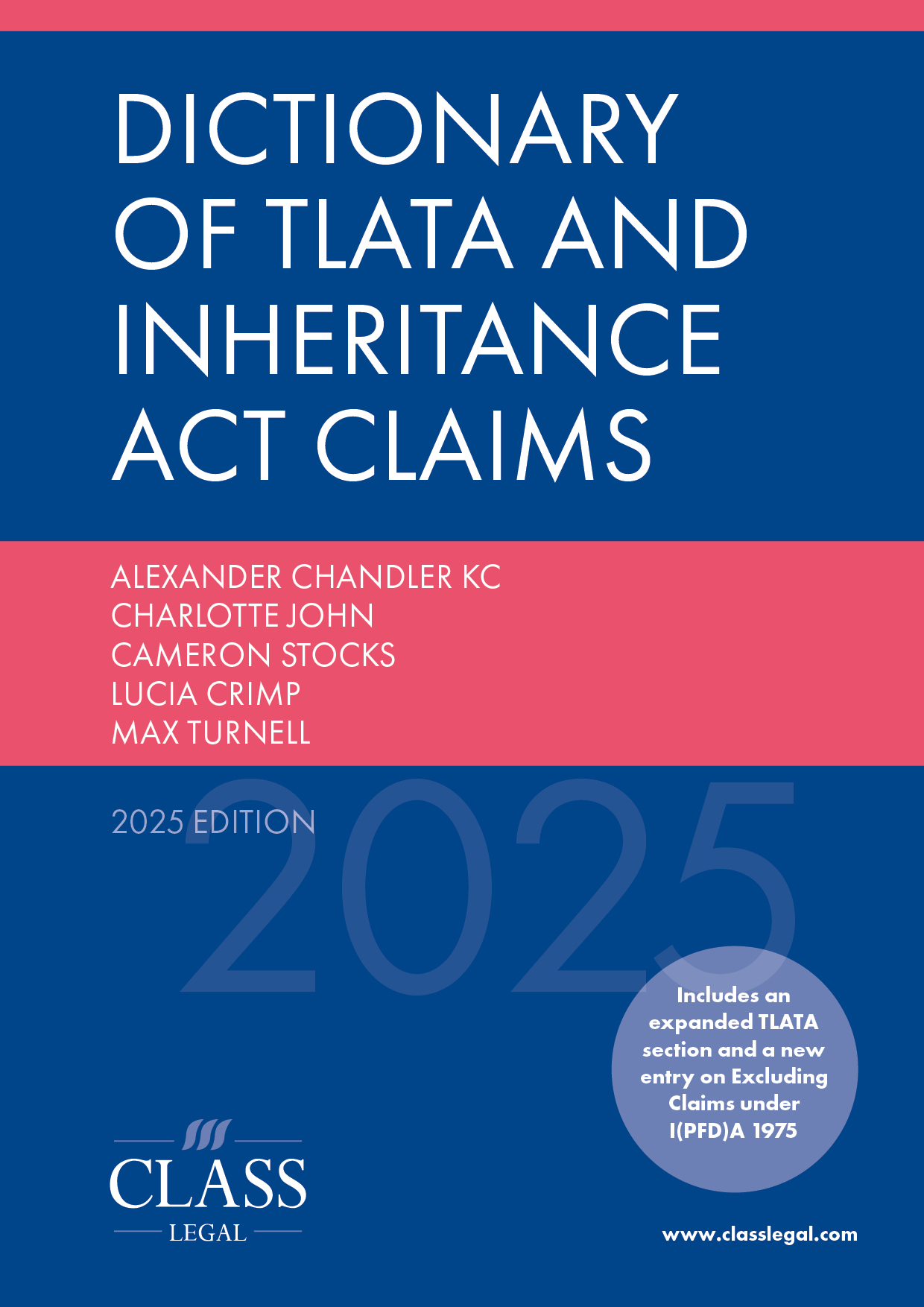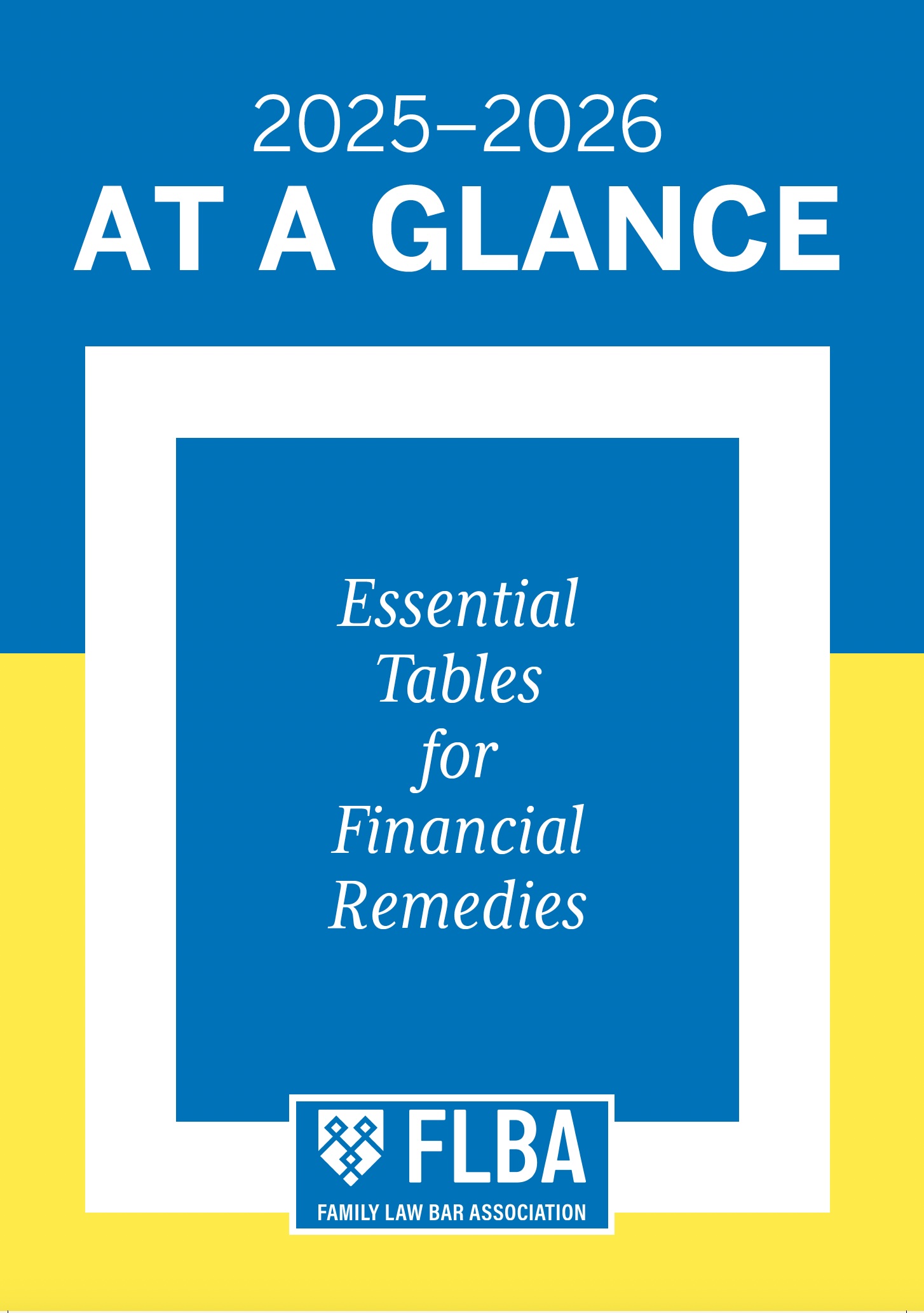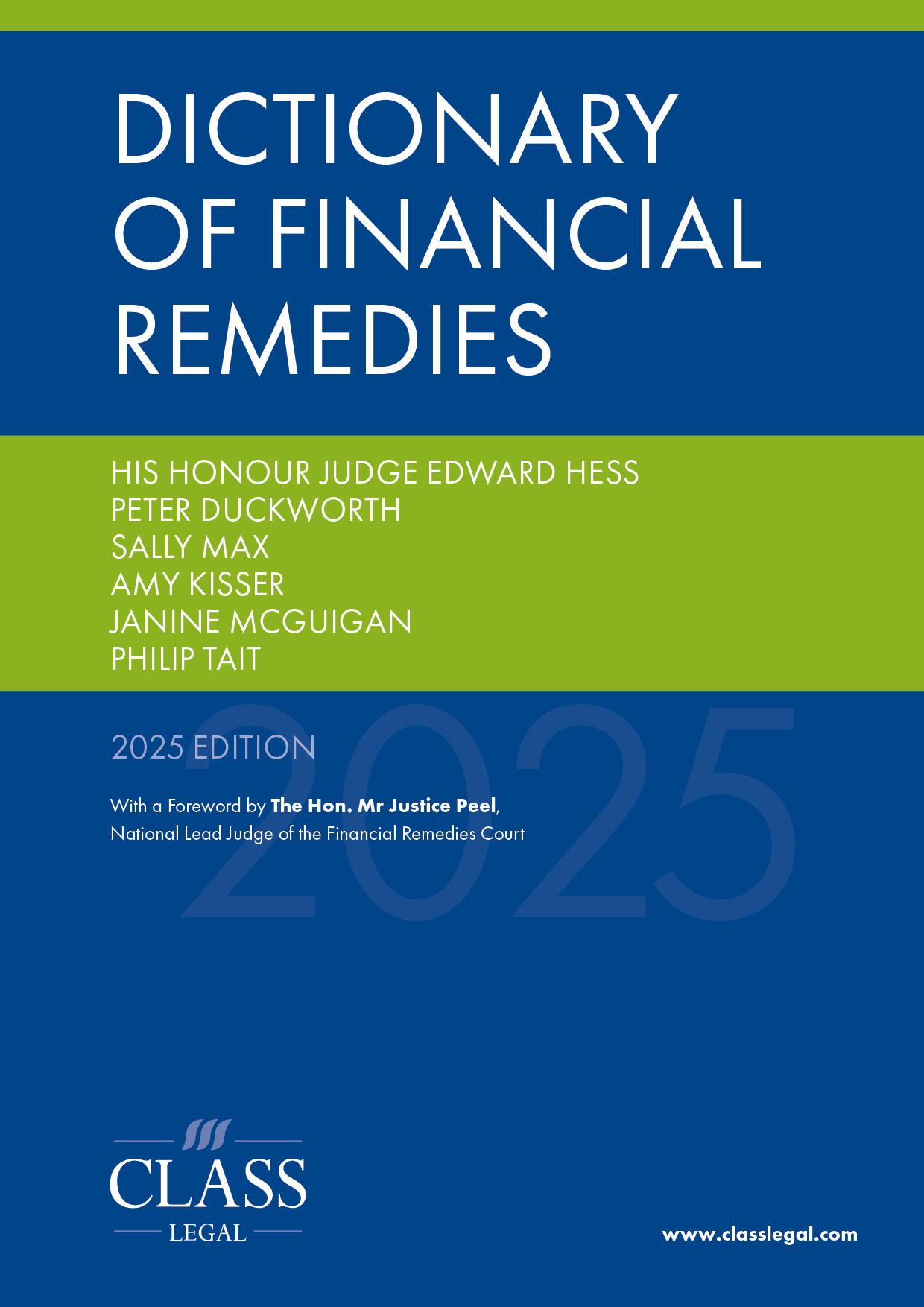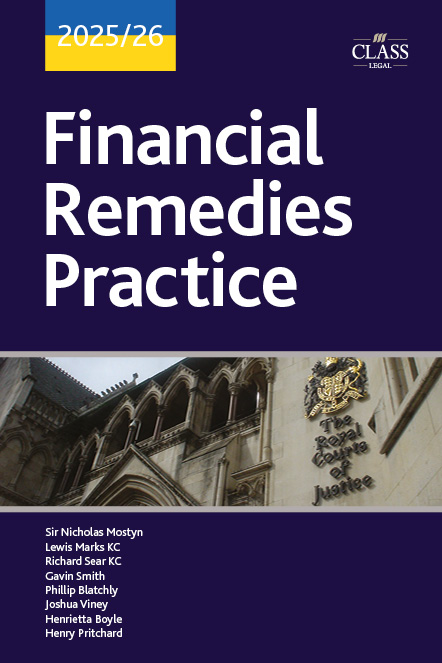
The Changing Limits of the Without Prejudice Doctrine (in the Light of the Shift in FPR Part 3)
Published: 04/04/2025 07:00

In this article James Pirrie and Victoria Nottage explore the intersection between the without prejudice doctrine as it applies to mediation and the inquisitorial responsibilities of the court as bolstered by the new protocols.
The changes to the Family Procedure Rules introduced in April last year, concerning the interaction between a litigant’s engagement with NCDR and their progress in litigation, have fundamentally moved the dial for the way mediators and solicitors are approaching their cases, but the practical ramifications of the new rules are still emerging.
Under the new regime the court is required to understand the parties’ engagement with NCDR, which raises the question of what of the NCDR history is disclosable and puts pressure on the doctrine of without prejudice under which NCDR usually operates. Will we see parties seeking routinely to introduce information that places blame and responsibility for earlier unsuccessful attempts at NCDR on the other and disclosing, or attempting to disclose, information that hitherto would not have seen the light of the court-day?
To consider the answer, we must first reflect on the principle of without prejudice.
The without prejudice doctrine
Without prejudice is a privilege seeking to balance encouragement to negotiate with the imperative that the court has all relevant facts on which to carry out its assessment. The words of Oliver LJ in the 1984 case of Cutts v Head make it clear that this is a pragmatic doctrine:
‘It is that parties should be encouraged so far as possible to settle their disputes without resort to litigation and should not be discouraged by the knowledge that anything that is said in the course of such negotiations (and that includes, of course, as much the failure to reply to an offer as an actual reply) may be used to their prejudice in the course of the proceedings.’
The specific extension of the approach to conciliation and analogously to mediation was confirmed in the case of Re D [1993] 1 FLR 932, CA in 1993 and is neatly summarised in SG v SW [2020] EWHC 3379 (Fam):
‘Parties must be free to discuss candidly all options for settlement and think the unthinkable without fearing that their words will be used against them in subsequent litigation. Mediators must be free to perform their valuable role without fear they will be dragged into that litigation either by court orders for provision of their notes or to be called to give evidence for one parent and against the other.’’
The Guide to Family Mediation for the Courts, updated by the FJC and FMC last year, provides the following summary for judges with regards to the without prejudice doctrine and the cloak of confidentiality which are pillars of mediation:
‘Mediation is confidential and legally privileged except where there are concerns of risk of harm to a child or adult or of criminal activity.
Participants understand that all communications and conversations, except the disclosure of financial information, are made on the basis that they:
(a) Are confidential;
(b) Will not be referred to in evidence in any court proceedings about the same issues;
(c) Will not be used in affidavits or statements
Similarly the court is not able to require mediators to disclose information about any mediation which has taken place except where there is an over-riding obligation in law … Mediation privilege can be waived with the consent of both parties. Confidentiality can be waived only with the consent of both parties and the mediator where there is an overriding obligation in law.’
The new landscape
Until now, mediation and litigation have operated in a sequential way: first one then the other and this has permitted a firm boundary to help bolster the safe space of mediation. However, policy makers have now placed on our judges the burden of turning the parties back to the non-court space through the provision of Part 3. That development is welcomed but it raises the question of what information from earlier non-court endeavours should be given to the judges so they can accurately assess whether to discharge their Part 3 discretion.
The court must understand and take into account the parties’ stance as to engagement with NCDR so as to be able to fulfil the overriding duty, actively manage the case and later to determine the issue of costs. The court is required ‘at every stage’ to keep at the forefront of mind the appropriateness of NCDR, and the parties are required to report and ‘explain’ their attitude to it, filing form FM5 seven days before the first hearing and prior to subsequent hearings if so directed.
Under updated provisions of FPR Part 28 and together with the interpretation provided by the Pre-Application Protocol annexed to Part 9, the court will take into account a failure without good reason to attend NCDR or a premature and unjustified abandonment of ongoing NCDR in determining the question of costs.
To consider how these changes might have a practical impact, we include two scenarios:
Scenarios
In one case, the mediator has made the assessment that, despite their intervention, the husband is so pressured by the wife’s advocacy that he is unable to negotiate towards a fair solution of the capitalisation of the wife’s periodical payments award.
In another, the husband would like to involve solicitors in mediation, to provide guidance on the court’s approach to capitalisation; however the wife is insisting that all she seeks is a meeting with the husband and the mediator. The process breaks down with each holding the other responsible… but of course behind which lies the reality that there is probably progress to be made if only the discussion process can be got back on track.
In either scenario, the court could be helped by basic information from the mediation process in excess of what will appear on the Form A/C100, to assist with the helpful exercise of the Part 3 jurisdiction: in the former to eschew further attempts at NCDR and in the latter to call a hiatus in the court process and to permit the parties to try again.
Is the potential for good a sufficient reason to interpret the court’s inquisitorial role more expansively? For example, do we need to investigate whether the information now available to the court on Forms A and C100 needs to be extended to encompass arrangements for the process to permit the court to consider correspondence between parties and their mediators about the arrangements for process?
The pragmatic approach
We suggest that by continuing to adopt the purposeful and pragmatic analysis that characterises the without prejudice doctrine and thinking about the demands of:
- the encouragement of negotiation, which includes recognition for the four pillars of mediation (it is voluntary; the mediation is impartial; the mediation is confidential; the decision-making lies with the parties);
- the need for the court to be provided with all possible relevant information; and
- the need for the court to make appropriate decisions under FPR Part 3 and to manage the case;
there is a boundary between these imperatives.
We suggest three guiding principles:
- Parties should provide information that will help the judge to assess whether there has been a serious engagement in NCDR or, again, that the parties have been down this route and now just need a solution imposed. We suggest this includes:
- the dates of MIAMs;
- the dates of mediation meetings;
- their duration;
- who was in attendance other than the parties and the named mediator on the FM1.
- The judge should know if a mediator has made the assessment that mediation cannot continue for reasons of safety or power-imbalance; rather than simply an impasse. The former will weigh heavily in the judicial assessment that it would be wrong to adjourn for another form of NCDR to be undertaken – indeed it may mean that the judge does not contribute to an existing power imbalance. Whereas an impasse might lead to the judge concluding that with the additional clarity of proceedings, it is worth exploring the chances of NCDR now succeeding. It is surely right on balance that the judge should be able to harvest the insight of the mediator who has seen the parties in terms of informing their decision on exercising Part 3 powers. So it may be that our Form A & C100 will need further review so that this information can be made plain, rather than leaving the parties to provide their partisan presentation in the FM5.
- Caution needs to be exercised to preserve the doctrine and the safe space for mediation. We therefore suggest that the basic rule will generally be that there should be no reference to a without prejudice offer having been made and this remains the case even if no hint as to the contents are given.
This is because whether a without prejudice offer has been made has nothing to do with the exercise of Part 3 powers. The hint usually is given in relation to arguments about why there was no open offer, where everyone has in mind the words of Mostyn J in OG v AG [2021] 1 FLR 1105:
‘[31] It is important that I enunciate this principle loud and clear: if, once the financial landscape is clear, you do not openly negotiate reasonably, then you will likely suffer a penalty in costs. This applies whether the case is big or small, or whether it is being decided by reference to needs or sharing.’
This will crop up during the case where one side is pursuing an adjustment on a Rothschild v de Souza basis.1
The reason why, in most cases, the court should not permit this is that it invites abuse. It is wrong that an advocate can seek to present their client as having acted reasonably by making a without prejudice offer in response to an open one when the contents of that privileged offer (which may be utterly unreasonable) are not available for the court to assess.
This remains the case for Calderbank regime cases (e.g. Schedule 1 or interim provision), because the assessment of costs is made after the award and the award should not be influenced (prejudiced) by the without prejudice offers that have been made.
It is right that the imperative to make an open offer is front and centre and parties should not be given the opportunity to fudge where they have fallen short by reference to privileged correspondence.
Further clarification
It will be helpful though that the President provides clear guidance that there is to be no form of ‘witch hunt’ for why mediation may have broken down (the impasse cases: who was right and wrong). This goes to the heart of supporting the non-court space and two of the four pillars of mediation: decision-making is in the hands of the parties and continuing in mediation is voluntary. Mediation is simply an opportunity to solve a problem – the judge using their Part 3 powers can encourage engaging with that opportunity but not what use is made of it.












